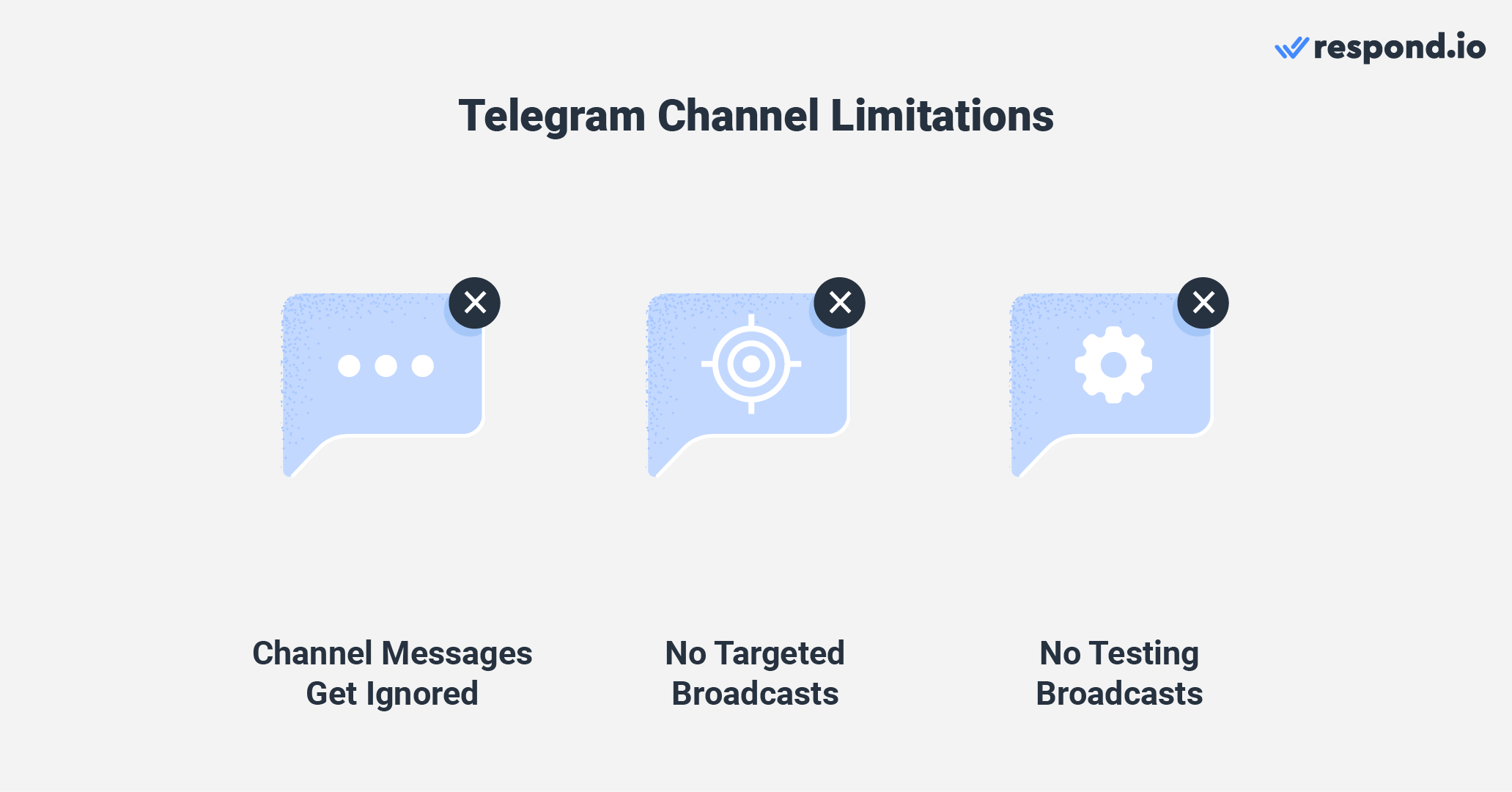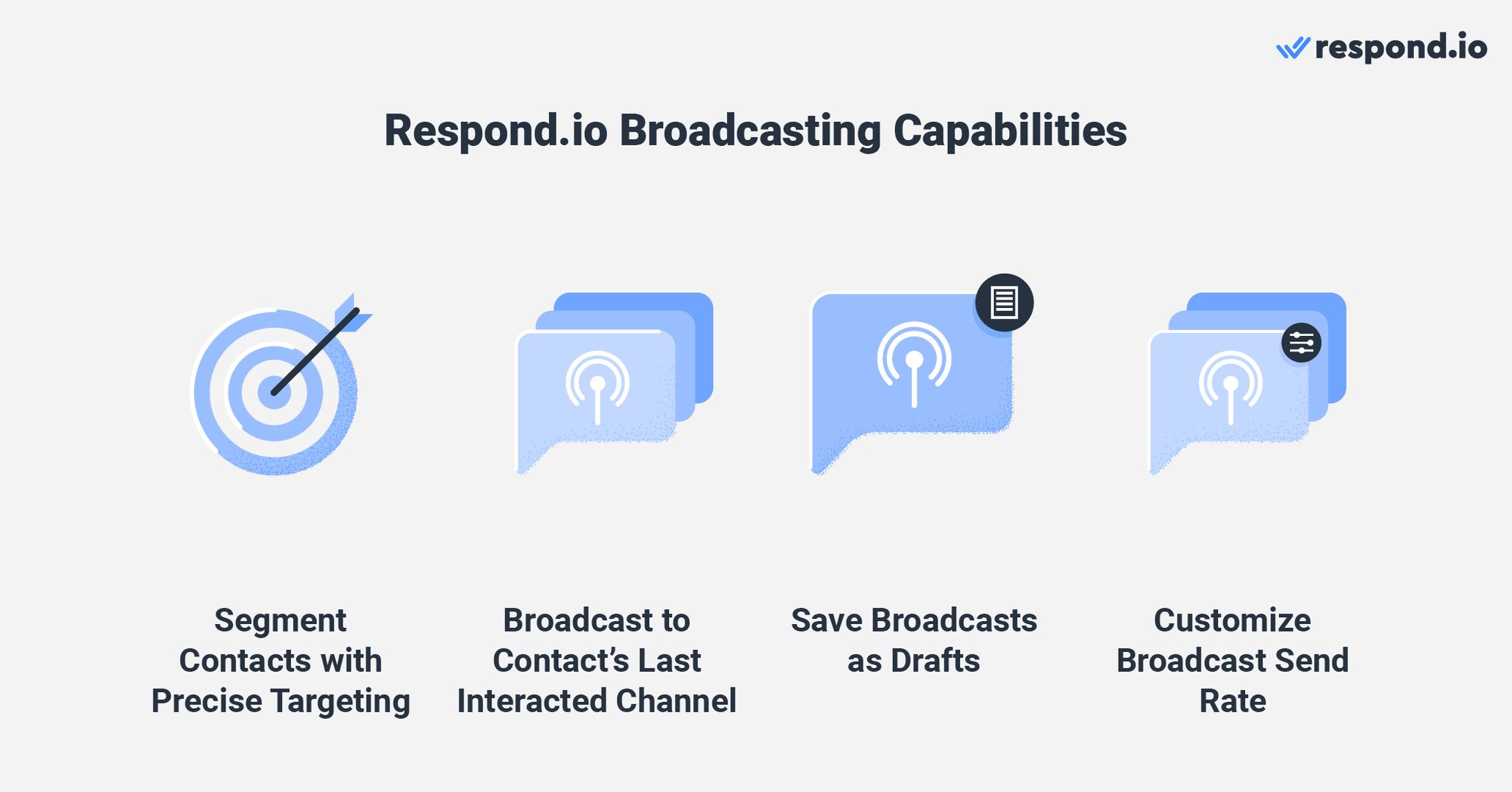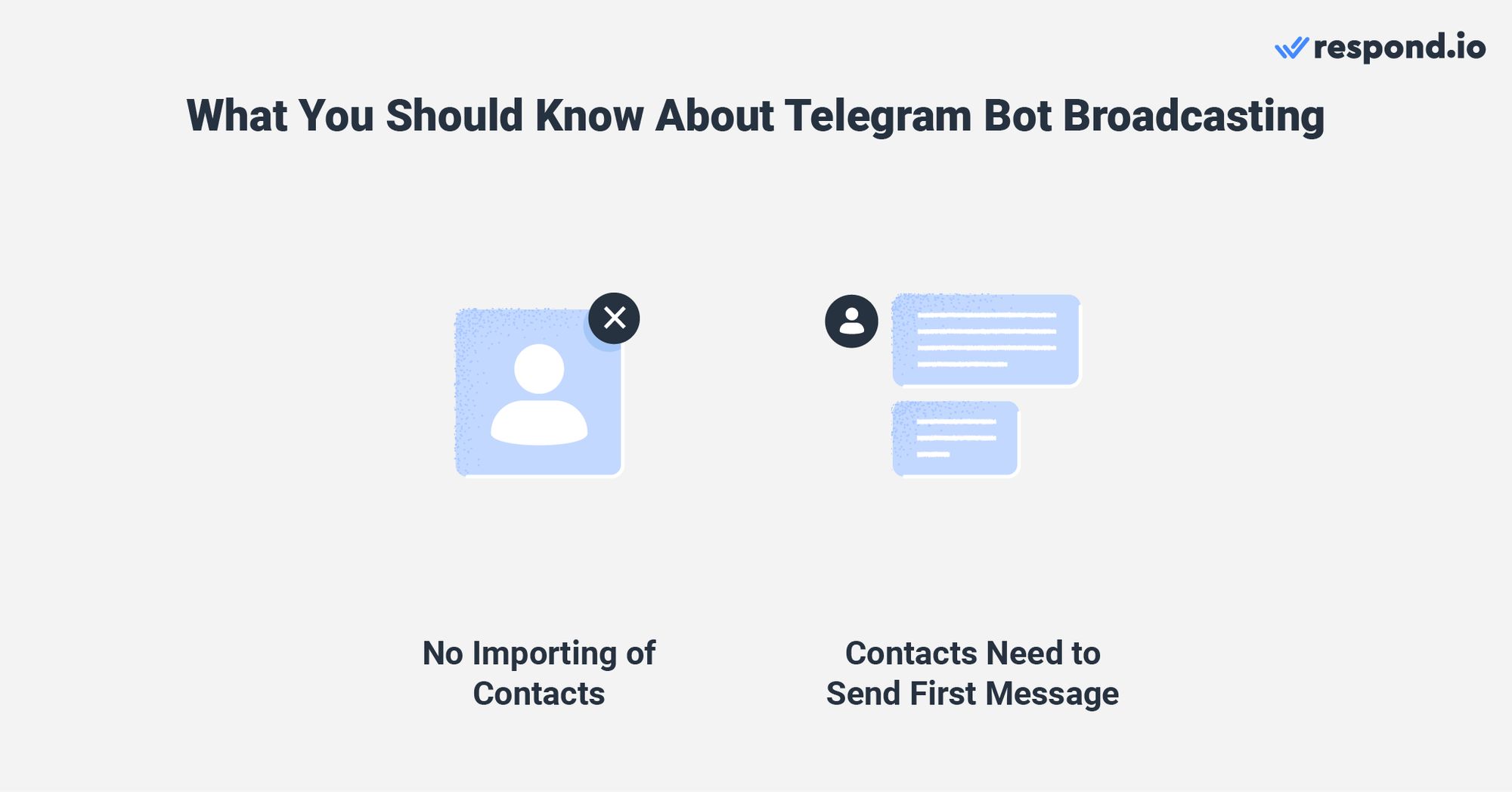
Looking to use Telegram broadcast to reach thousands of customers? You’ve come to the right place. In this article, we’ll explore what broadcasting is, the benefits of using Telegram bulk message sender to broadcast and how to send bulk messages.
Broadcast Messaging: Traditional Channels vs Telegram Broadcasts
Broadcast messaging or bulk messaging is a method of delivering information to many recipients simultaneously. Businesses use broadcast messages to keep their contacts updated about store closures, unexpected delays, upcoming promotions and more.
Broadcasting used to be carried out on channels like email and SMS but these days, bulk messaging is accomplished via instant messaging instead.
Text messages have limited characters, no rich media and can be costly to send out while emails tend to be ignored, forgotten or sent to spam. Instant messaging channels like Telegram, Facebook or WhatsApp solve these problems while providing extra benefits.
Messaging apps on everyone’s phones and push notifications mean businesses get their contacts’ attention immediately. With video and image support making messages more engaging, it’s easy to see why their open rates are a 600% improvement over emails!
Next, we’ll go over the reasons why we would use Telegram over other channels when it comes to broadcasting.
Why Use Telegram Broadcast?
With so many instant messaging channels in the market to choose from, why would you pick Telegram over the rest? Every channel has its own advantages and disadvantages when it comes to broadcasting but we’ll focus on Telegram in this article.

Here are the reasons why you would use Telegram as a bulk message sender:
Telegram has higher usage in regions such as Eastern Europe and is one of the most downloaded apps in the world, with over 700 million monthly users. If your target audience mainly uses Telegram, it would be the wisest choice.
Using the Telegram Bot is free and there are no subscription fees or message fees imposed on businesses. To send broadcasts, businesses will need to connect to a messaging platform like respond.io to start messaging.
Businesses on Telegram can reach out to any contact who has messaged them in the past and there are no restrictions like 24-hour windows or message templates
Compared to messaging channels like WhatsApp or Facebook, Telegram has fewer restrictions on the types of messages businesses can send, as long as they’re legal
Since we’ve decided that Telegram is the best choice for your broadcasts, how do we go about sending them?
Turn customer conversations into business growth with respond.io. ✨
Manage calls, chats and emails in one place!
Broadcasting on Telegram
There are two ways a business can use Telegram to broadcast, either with Telegram Channels or bots. Using Telegram Channels involves launching the Telegram app, opening a channel and sending a message en masse to everyone in the channel.
Telegram Channels are simple and straightforward to use but they have a few disadvantages.

Messages tend to get ignored, especially on channels with a lot of activity, so your broadcasts are likelier to be missed. Businesses can’t send targeted broadcasts since contacts can’t be segmented and there is no way to test broadcasts before sending them.
The alternative method to broadcasting on Telegram Channels is using a Telegram Bot. While it solves the issues that channels face, Telegram Bots require a third-party inbox platform such as respond.io in order to receive and send messages.
Why Use Telegram Bot to Broadcast with Respond.io
With Telegram Bot and respond.io, you can unlock the full potential of Telegram as a broadcasting tool. Telegram Bots let you broadcast messages directly to your contacts, allowing them to respond to you privately, which is great for support purposes.
Respond.io’s Broadcast Module improves the targeting and flexibility of bulk messaging with several features. The Contact Segment feature allows users to create precise target audiences based on Contact Fields, Tags or predefined conditions.
Customers with the right Contact Fields, Tags or conditions will automatically enter a Segment while those who no longer meet the criteria will exit a Segment, ensuring your list is always up-to-date with no manual effort from your team.

In addition to selecting multiple channels for a broadcast, you can also improve reach by broadcasting to your Contacts' last interacted channel to increase visibility and engagement rates. It’s also possible to save broadcasts as drafts if they aren’t ready for dissemination. This allows you to edit or reschedule them before they go live.
If your plan supports it, you can customize the rate at which your broadcast is delivered. A Telegram broadcast can be scheduled so they reach your contacts at optimal times and you can run tests before sending them to ensure your outgoing messages are flawless.
What You Should Know About Telegram Bot Broadcasting
Telegram Bots are a versatile and powerful tool but there are certain restrictions Telegram has in place. Since Telegram was designed as an anti-spam messenger, contacts cannot be imported directly into your contact list.

You will need to build up your contact list by getting contacts to send you the first message. Fortunately, Telegram has a few ways of getting contacts to initiate conversations with businesses — chat links, QR codes and the in-app search.
Once you receive the initial message from a contact, you’ll be able to reach out to them with no further restrictions. So make sure to not spam them or you’ll get blocked or reported!
Now that we’ve learned about the limits of using a Telegram Bot for broadcasting, we’ll explain how to broadcast on Telegram through respond.io.
Telegram Bulk Message Sender: How to Broadcast with a Telegram Bot on Respond.io
Broadcasting on respond.io is a straightforward process with plenty of flexibility offered in creating content, targeting audiences and scheduling or sending broadcasts.
To get started, navigate to the Broadcast Module in the side navigation menu and click the Add Broadcast button. Then name your broadcast and click Create. You also have the option to label (categorize) it for easier referencing in the future.

Proceed to set up your broadcast by selecting your Segment. Select the Specific Channel option, and in the channel drop-down list, select the Telegram channel from which to send the message. Then, create your content. For more information, check out this guide on how to set up and manage broadcasts on respond.io.
After your broadcast successfully arrives at its recipients, you can expect an inbox full of customer replies. Build automation with respond.io Workflows to manage them efficiently, or even leave it to AI Agent, a conversational chatbot that learns and improves its responses with training.
Now that we’ve gone through all of Telegram’s broadcasting capabilities on respond.io, you can disseminate bulk messages to your contacts with ease. If you haven’t signed up for a respond.io account yet, we have a free trial for you to start off with.
Respond.io also supports handling multiple channels from the same platform, so if you want to broadcast on other instant messengers, check out our Viber and WhatsApp broadcast guides!
Turn customer conversations into business growth with respond.io. ✨
Manage calls, chats and emails in one place!
Further Reading
If you found this article helpful and would like to learn more, here are some useful resources:






































 Electronics
Electronics Fashion & Apparel
Fashion & Apparel Furniture
Furniture Jewelry and Watches
Jewelry and Watches
 Afterschool Activities
Afterschool Activities Sport & Fitness
Sport & Fitness
 Beauty Center
Beauty Center Dental Clinic
Dental Clinic Medical Clinic
Medical Clinic
 Home Cleaning & Maid Services
Home Cleaning & Maid Services Photography & Videography
Photography & Videography
 Car Dealership
Car Dealership
 Travel Agency & Tour Operator
Travel Agency & Tour Operator




